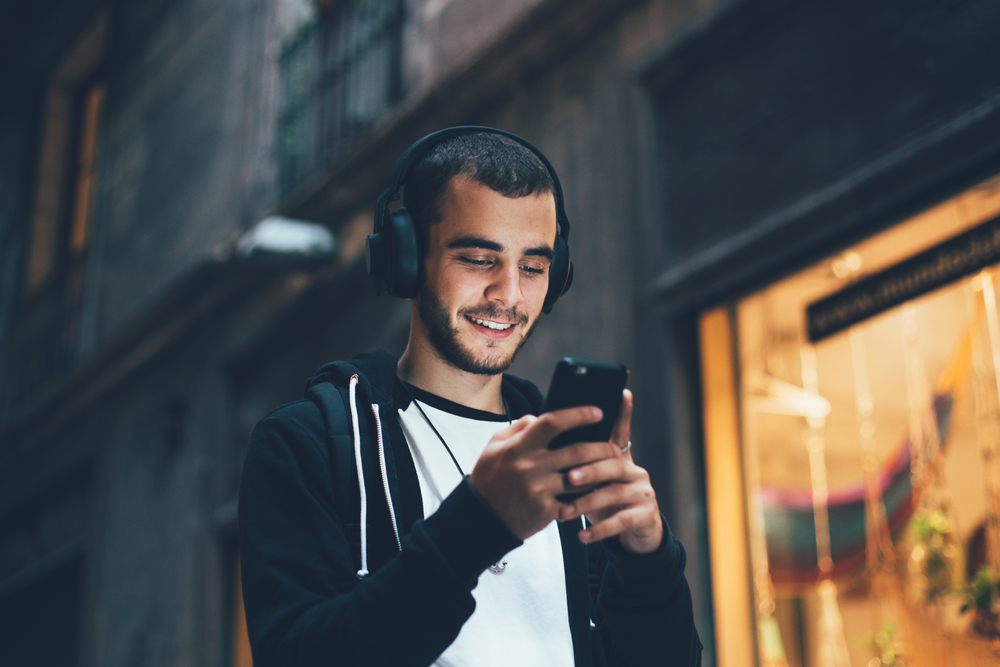
James is a music aficionado who has excelled in the art of incorporating his favorite tunes into his day-to-day life, effortlessly transitioning from Spotify at his workdesk to Pandora on his runs, and carefully putting together playlists to perfectly enhance every activity, whether he’s pumping iron, whipping up a meal, or immersed in a gaming session. He’s rarely observed without his headphones, which have become an essential part of his day-to-day life, turning every moment into a personalized audio adventure. James takes comfort and joy in the captivating realm of music, but the very source of his joy might be harming his cherished ability to hear without him realizing it.
There are safe ways to appreciate music and ways that are more risky to your hearing health. Sadly, many of us tend to gravitate towards the latter.
What is the connection between prolonged exposure to music and hearing damage?
As time pass, loud noises can bring about deterioration of your ability to hear. We’re used to regarding hearing loss as an issue associated with growing old, but an increasing amount of research reveals that it’s really the build-up of noise-related damage that is the concern here and not anything intrinsic in the process of aging.
It also appears that younger ears are especially vulnerable to noise-related damage (they’re still developing, after all). However, teenagers tend to disregard the possible risks of excessive noise over time. So there’s an epidemic of younger people with hearing loss, thanks, in part, to widespread high-volume headphone usage.
Is it possible to enjoy music safely?
Unregulated full volume is obviously the” hazardous” way to listen to music. There is a way to enjoy to music more safely, which usually means reducing the volume. The recommended safe volume levels are usually as follows:
- Adults should limit their device listening time to 40 hours or less and make sure the volume stays below 80 dB.
- If you’re under 18, 40 hours is still ok, just be certain to keep the sound at a safe level, 75 decibels or less.
Breaking it down, you’re dealing with approximately 5 hours and 40 minutes of listening each day. Although it might seem excessive, the time can pass unexpectedly fast. Even still, most people have a fairly strong concept of monitoring time– it’s something we’re trained to do successfully from a very young age.
The more challenging part is monitoring your volume. On most smart devices, computers, and televisions, volume is not measured in decibels. It’s assessed on some random scale. The range could be as wide as 1 to 100, or it might be as narrow as 1 to 16. You might be unaware of the maximum volume range of your device or how near you are to reaching that limit.
Tips for efficiently keeping track of your music volume
To address this problem, a number of free noise monitoring applications are available for both iPhone and Android devices. These apps provide immediate feedback on surrounding noise levels, helping users to tweak their listening volume to safe levels.
That’s why most hearing specialists recommend the use of one of many free noise monitoring apps. These widely accessible apps, compatible with both iOS and Android platforms, supply instant sound-level feedback on the ambient noise around you. In this way, you can monitor the decibel level of your music as it plays and make changes as necessary.
Comparing relative volumes: from garbage disposals to dishwasher
As illustration, 80 dB is approximately comparable to the noise emitted by a typical garbage disposal or dishwasher– audible, yet not excessively loud. Acknowledging this benchmark is essential, as it represents the limit beyond which auditory damage becomes a tangible hazard.
It’s important to exercise increased caution when noise levels surpass this critical point. Think about decreasing your exposure to extremely loud music by listening to specific songs at the highest volume instead of listening to entire albums.
Recurring exposure to elevated volume levels can lead to hearing complications including tinnitus and eventual hearing loss. By being cognizant of when our ears move into the danger zone, we enable ourselves to make educated decisions, with the paramount goal of fostering safer listening practices.
Set up an appointment for a hearing assessment
To further prioritize your auditory health, consider reaching out to a hearing specialist to set up a thorough hearing exam. Taking practical steps like consistent screenings can pinpoint possible issues at an early stage, enabling prompt actions and customized advice to protect your valuable hearing.